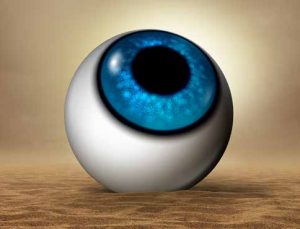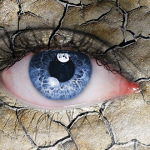 CHICAGO—“Sjögren’s has proven to be one of our most difficult to diagnose autoimmune rheumatic diseases,” began Frederick B. Vivino, MD, MS, director of the Penn Sjögren’s Syndrome Center, chief of rheumatology at Penn Presbyterian Medical Center and professor of clinical medicine at the Perelman School of Medicine at the University of Pennsylvania, as he opened the session on Sjögren’s syndrome at the 2018 ACR/ARHP Annual Meeting on Oct. 21. Many rheumatologists gathered in the large auditorium, with some forced to sit on the floor to learn about these issues. Dr. Vivino noted that although there is a defined classification for Sjögren’s syndrome, clinicians still face practical challenges in making an accurate diagnosis. In addition, gaps and challenges exist in treating local and systemic manifestations of Sjögren’s syndrome.
CHICAGO—“Sjögren’s has proven to be one of our most difficult to diagnose autoimmune rheumatic diseases,” began Frederick B. Vivino, MD, MS, director of the Penn Sjögren’s Syndrome Center, chief of rheumatology at Penn Presbyterian Medical Center and professor of clinical medicine at the Perelman School of Medicine at the University of Pennsylvania, as he opened the session on Sjögren’s syndrome at the 2018 ACR/ARHP Annual Meeting on Oct. 21. Many rheumatologists gathered in the large auditorium, with some forced to sit on the floor to learn about these issues. Dr. Vivino noted that although there is a defined classification for Sjögren’s syndrome, clinicians still face practical challenges in making an accurate diagnosis. In addition, gaps and challenges exist in treating local and systemic manifestations of Sjögren’s syndrome.
Diagnosis
Alan N. Baer, MD, director of the Jerome L. Greene Sjögren’s Syndrome Center at Johns Hopkins University School of Medicine in Baltimore, gave the first presentation. He began by reviewing the diagnosis of Sjögren’s syndrome. He agreed with Dr. Vivino that Sjögren’s is the most difficult rheumatic disease to diagnose. Moreover, he emphasized that accurate diagnosis is a prerequisite for appropriate management with existing and emerging targeted therapies. “It does matter,” he said, adding, “We need to move as far as we can toward an accurate diagnosis in order to advance the field.”
Sjögren’s syndrome, a chronic systemic autoimmune disease, is characterized by lacrimal and salivary gland inflammation with resultant dryness of the eyes and mouth. Most (94%) patients are women with a mean age of 52 years. “This is the rheumatic disease with the highest female preponderance,” added Dr. Baer. Most patients have a positive lip biopsy, and three-quarters of patients have anti-Sjögren’s syndrome-related antigen A (anti-SSA A) and/or anti-SSB positivity, meaning that seropositive Sjögren’s is clearly predominant. He explained that clinicians can use ocular surface staining and/or Schirmer test to assess dry eyes.
Healthcare providers should suspect Sjögren’s if a patient presents with sicca symptoms or their consequences. These symptoms will likely be persistent daily features for patients with Sjögren’s syndrome. Patients may also be referred for evaluation of possible Sjögren’s because of distinctive extraglandular manifestations, such as small fiber sensory neuropathy, renal tubular acidosis and/or interstitial pneumonitis. Other features that should trigger clinical suspicion are salivary gland enlargement and, of course, positivity for SSA or SSB antibodies.
Dr. Baer advised the audience that a diagnosis of Sjögren’s is tenable if two of the following three features are present:
- Objective evidence of dry eyes and/or dry mouth;
- Evidence of systemic autoimmunity; and/or
- Characteristic salivary gland histopathology or imaging abnormalities.
He cautioned, however, that clinicians should also be sure to exclude mimics and confounders, such as an adverse effect from multiple medications, anticholinergic effects from medications and other diseases that can affect salivary glands (e.g., sarcoidosis, IgG4-related disease, graft vs. host disease).

